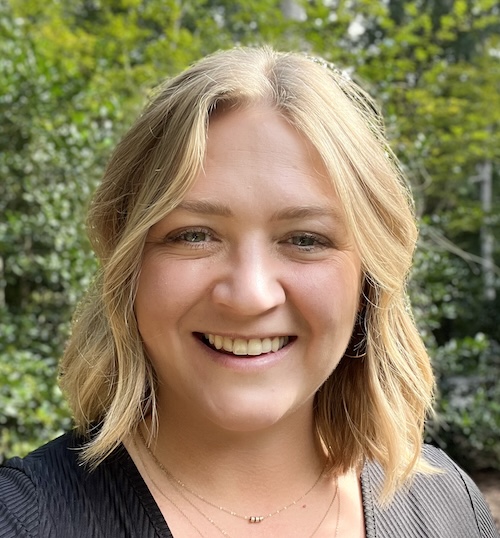
 back to all news
back to all news
Inventing tomorrow: Abby Hutson

Abby Hutson is an assistant research scientist at the Cooperative Institute for Great Lakes Research, which is hosted by the University of Michigan School for Environment and Sustainability (SEAS). We asked her to share more about her work in this brief Q&A.
What is your research focused on?
 My research focuses on weather and climate in the Great Lakes Region. More specifically, I am interested in historical trends in weather events that have impacted the Great Lakes Region, and how the Great Lakes Region’s weather and climate will adjust to a changing climate. This includes using numerical modeling methods to create high-resolution climate projections for the Great Lakes Region using global model data, and conducting analysis on historical datasets to determine how we’ve seen our regional weather change in the past 60 years.
My research focuses on weather and climate in the Great Lakes Region. More specifically, I am interested in historical trends in weather events that have impacted the Great Lakes Region, and how the Great Lakes Region’s weather and climate will adjust to a changing climate. This includes using numerical modeling methods to create high-resolution climate projections for the Great Lakes Region using global model data, and conducting analysis on historical datasets to determine how we’ve seen our regional weather change in the past 60 years.
What is the impact of this research?
We can learn many things from an analysis of historical weather and climate data!
First, by analyzing data over a long period, we can really see how a changing global climate can impact our regional weather. When we compare our findings to projected climate trends, we give a “reality check” to the models, and ensure that our climate projections are consistent with our historical trends.
Second, by comparing historical modeled and gridded atmospheric data with point observations in and around the lakes, we can better understand how well our current modeling methods capture our regional dynamics. The Great Lakes region is unique: the interactions that go on between the atmosphere, the lakes and the land are extremely complex and are not usually modeled well. By comparing model data to observed datasets, we can give valuable insight into how our models can be improved.
There is also great impact in creating regional climate model projections for the Great Lakes Region. While there are a few existing regional climate models for the Great Lakes, it is important that we create an ensemble of potential climate outcomes using different regional models. The reason for this stems from the points I made about models struggling to recreate the complex relationship between the Great Lakes and the surrounding atmosphere. One model will not be perfect! However, when we have an ensemble of models estimating regional climate outcomes, we can better understand the range of possibilities we see for our future in the Great Lakes.
Learn more about SEAS research scientists:

